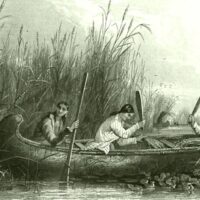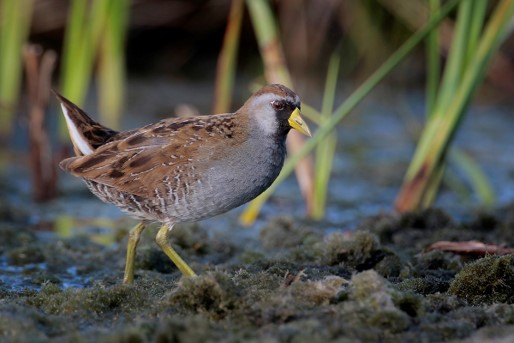In 1987, Greg began to investigate the secret life of Sora Rails, a small marsh waterbird, found at the Jug Bay which led to ground-breaking research and understand f the bird’s natural history as well as an amazing restoration effort. Greg’s annual banding of the birds showed a marked decline. At their peak in 1998, he banded 1,300 rails; by the year 2,000, only 100. He and USGS biologist Mike Haramis linked the decline of the rails to the vanishing stands of wild rice (95% decline) they observed during the same period. The study revealed the culprit to be resident Canada geese which launched a full-scale wild rice restoration combined with a Canada goose management plan.
Today the Wild Rice has recovered at or beyond the acreage existing thirty years ago. Will Sora numbers increase as well? How have other waterfowl been affected? “It’s a very delicate balance,” Greg says “There’s nothing in these wetlands more productive and nutritious than stands of wild rice for seed-eating migrant birds.” Greg will share his power point talk and stories on nature’s delicate balancing act.
Greg Kearns, a MNCPPC naturalist/biologist for over 37 years at Patuxent River Park in Upper Marlboro Maryland, is an accomplished photographer, birder, and an authority on the Sora Rail (Porzana carolina), Osprey (Pandion haliaetus) and wetland ecology at Jug Bay. He was named conservationist of the year by the Maryland Dept. of Natural Resources in 2006 for this work and for restoration of the Wild Rice marshes on the river, which has been recognized as one of the best wetland recoveries in Maryland. He also received the Jug Bay Award for significant contributions to the environment on the Patuxent and was given the 2017 National Wetlands Restoration and Conservation award from the Environmental Law Institute in Washington, DC. Jug Bay is a component of Maryland’s Chesapeake Bay National Estuarine Research Reserve System, one of only 29 in the country.


